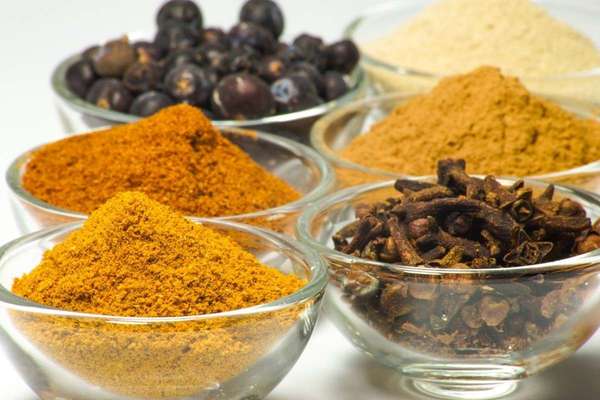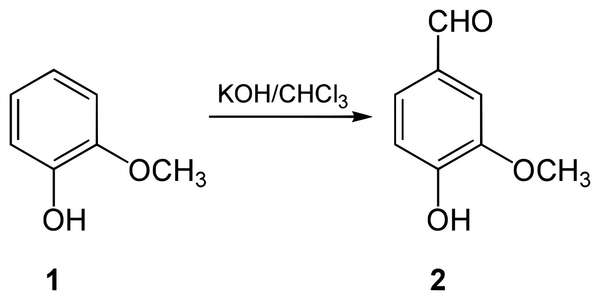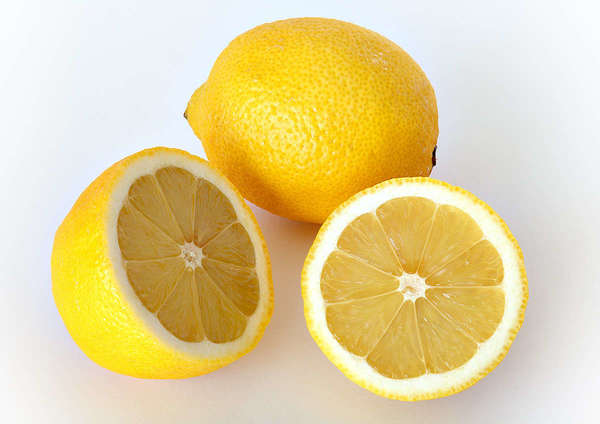Additives in Tea
Last Updated: Jul. 19, 2017Tea is a natural and healthy drink, but commercial products marketed as tea can contain a wide range of different additives. In addition to deliberate additives, tea can also have contaminants, substances that unintentionally make it into the finished product.
This article focuses on synthetic or highly processed (refined) additives to blends of tea and herbal teas. Pure tea, made from only the leaves of the Camellia sinensis plant, does not contain any additives, and many herbal tea blends, as well as some flavored teas, are also made only from whole ingredients. However, flavored teas commonly contain a number of different additives.
The most common additives are flavorings, which in the U.S., are classified into natural flavors and artificial flavors. After this, citric acid is the most common additive.
Some blends, especially those marketed as wellness teas or medicinal teas, also contain various extracts intended as a nutritional supplement, including tea extracts, extracts from other herbs, or or probiotics.
 Natural ingredients are derived from processed ingredients like the ones pictured, but they are not the same as whole ingredients.
Natural ingredients are derived from processed ingredients like the ones pictured, but they are not the same as whole ingredients.Natural flavors
The term natural flavor is a broad category that includes any naturally-occurring flavorings extracted from a food ingredient. Natural flavorings include essential oils or distillates, as well as other extractives that require enzymes or hydrolysis for extraction. Natural flavorings are a common ingredient in flavored teas.For most people, natural flavors pose no health risks, but in a few rare cases, certain flavors can contain allergens. Because companies are not required to disclose which flavorings are used, people with serious allergies to some flavorings usually need to avoid any products that mention "natural flavors". Although uncommon, this category may include animal sources, so these flavorings are avoided by some strict vegetarians or vegans.
Even though they are safe, natural flavors are often used to mask low-quality ingredients. Some companies use a business model of buying a low-quality base tea and blending it with inexpensive natural flavorings, perhaps throwing in a small amount of whole ingredients for show, so that the blend looks visually distinct from a pure tea, and so that the companies' different blends look different from each other.
The highest-quality blends are often made only from whole ingredients, and use natural flavorings more sparingly, and artfully, carefully choosing a base tea to pair with or complement the various flavors.
 Vanillin is one of the most commonly used artificial flavors, because vanilla is expensive and vanillin can be synthesized from cheaper sources, such as guaiacol (formula pictured here).
Vanillin is one of the most commonly used artificial flavors, because vanilla is expensive and vanillin can be synthesized from cheaper sources, such as guaiacol (formula pictured here).Artificial flavors
Artificial flavors encompass flavorings not extracted from food sources. For example, fractional distillation of non-edible substances such as crude oil or coal tar, is used to extract flavoring substances that are chemically identical to the chemicals extracted from foods and used in natural flavorings.Artificial flavorings are not inherently "better" or "worse" than natural flavorings. Because they come from inedible, non-food sources, artificial flavorings usually have stricter standards for purification. They can also omit certain naturally-occurring compounds that can be toxic. In some cases, if the natural flavorings are harvested in an unsustainable way, artificial flavors can be superior with respect to sustainability.[1][2]
Among teas, blends flavored primarily with artificial flavorings will have a flat, simple, and artificial quality. However, when used sparingly sparingly as accent notes to enhance or contribute to blends that have their own aromatic complexity from high-quality, whole ingredients, artificial flavorings can contribute to positive overall flavor experiences.
 Citric acid is best-known for being the acid that makes lemons sour. It is an occasional ingredient in tea blends, especially herbal tea blends. Photo by André Karwath, CC BY-SA 2.5.
Citric acid is best-known for being the acid that makes lemons sour. It is an occasional ingredient in tea blends, especially herbal tea blends. Photo by André Karwath, CC BY-SA 2.5.Citric acid
Citric acid is a naturally-occurring acid named for its prevalence in citrus fruits like lemon and orange. It is the acid responsible for the sour flavor of these fruits. The safety of citric acid depends on its concentration: in small quantities it is harmless, but in sufficient concentrations it can erode tooth enamel as well as causing irritation of the mouth and throat.When added to tea, citric acid imparts sourness, and depending on the amount added, it can increase the acidity of the tea (lowering the pH) far beyond its natural range. The acidity of tea depends on brewing strength, but a typical cup of tea tends to be around 4.9. Citric acid is most often added to herbal blends, especially fruity ones, and is rarely added to true teas. If you are concerned about the negative impact of citric acid, pay attention to how sour herbal tea blends are, and avoid blends with a strongly sour taste.
If you end up with tea bags that taste too sour because of added citric acid, you can remove some of it by briefly running the tea bags under cold water, then steeping the tea bag normally. Citric acid is highly water soluble, and often dissolves more quickly than flavor can be extracted.
Sweeteners
The standard in the tea industry is to sell tea bags or loose-leaf tea blends unsweetened, and allow users to add their own sweeteners. However, there are a few pre-sweetened products, such as those marketed as "sweet tea". These can include sugar, but more commonly include artificial sweeteners such as saccharin, aspartame, or sucralose. A natural sweetener such as stevia can also be used. We do not list such products on our site.Rarely, a company will include stevia or another sweetener in a blend that is not openly marketed as sweetened, such as Tazo's Vanilla Rooibos Parfait. Some common primary ingredients in herbal teas, such as licorice, are naturally sweet and can make a tea taste as strong as some sweetened blends, even if there are technically no additives in it. There is no clear or absolute cutoff between herbal ingredients that are sweeteners and those that are not. For example, cinnamon imparts a slightly but noticeable sweet flavor to blends, but it is strongly aromatic and is generally included primarily as a flavoring.
Colors
Tea can legally contain, but in practice rarely contains artificial colors that are openly advertised as such. However, in South India, there has been a persistent problem with people adding unreported colorings to tea, often as a way to "stretch" low-quality tea further. These colorings can include unsafe ingredients. Some unannounced ingredients in teas include coal tar dye, indigo, soapstone, prussian blue, and gypsum.World Tea News recommends a test for detecting such coloring: placing the tea leaf in cold water. If there is an immediate change in color, the tea has been colored. The color of natural tea infuses slowly.
Some herbal teas contain whole ingredients included primarily or partly for color. Hibiscus imparts a rich dark purple color, together with a strongly sour flavor and fruity aroma. Hibiscus is bold enough that even small amounts that do not impart much flavor, can make a tea's infusion pink in color. Other ingredients, such as cornflower, impart little flavor or aroma to blends, but are included mainly because they make the dry leaf look pretty and visually interesting.
Soy lechithin
Soy lecithin is a common emulsifier which contains soybean oil and some phospholipids and other lipids. It is uncommonly used as an additive in tea bags, where it occurs only in trace amounts. A few products, such as Bigelow's Perfect Peach include it in with their list of flavoring ingredients.Soy products have some concerns associated with their use, including allergies, ethical or ecological concerns with GMO's, and phytoestrogenic effects, and some people who strictly avoid all soy products may wish to avoid soy lecithin out of principle, and/or limit their consumption of it to organic or certified non-GMO products, but for most people, the traces of this additive in most commercial tea bags is not a cause for concern. There are far more compelling reasons, such as quality, price, and sustainability, to favor loose-leaf artisan teas over tea bags.
Modified corn starch
Modified corn starch is rare as an additive in tea blends, but does occur in a few, such as Lipton's now discontinued Vanilla Caramel Black Tea. It is usually included in only trace amounts, to change the texture. Other processed foods are much higher in modified corn starch, or modified food starches made from other sources. The main reason people would want to avoid modified corn starch is out of principle, such as if they want to drink only teas with whole ingredients, or if they are avoiding even traces of Genetically Modified Organisms (as corn in the U.S., used to make modified corn starch, is usually genetically modified). The starch is so processed and in such tiny amounts that it poses no risk of harm.Extracts or Supplements in Wellness Teas
In association with the craze or health fad associated with the purported health benefits of tea and other "hot" products labeled as "superfoods" in health food circles, some companies have taken to adding refined extracts of green tea or other plants, such as Acai berry, or other fruits or herbs, to their teas or herbal blends. Although tea itself is safe to drink when brewed normally, green tea extract is not safe and has been linked to liver failure and other health problems.[3]Concentrated supplements often use lower-quality ingredients, and often have a higher risk of contamination with heavy metals or other toxins, whereas high-quality loose-leaf teas are less likely to contain contaminants. The most dangerous teas are often those marketed as weight loss products. For these reasons, we recommend avoiding any product which has concentrated extracts or supplements added to a tea bag. The safest herbal teas and wellness tea blends are those made exclusively of high-quality, whole ingredients.
Added Caffeine
Some teas contain added caffeine, or high-caffeine extracts of tea, to supplement the caffeine naturally occurring in the tea leaf. This extra caffeine can pose a health risk in people who may not be aware of the higher dosage of caffeine in the tea, especially if they consume a large volume of the tea. On our site we classify such teas as energy teas; we recommend caution in labeling, storing, and sharing or serving such teas, to ensure that people know they're consuming tea with added caffeine, and have an idea of how much caffeine they are being exposed to.In summary
Tea, herbal teas, and associated blends are relatively free of additives, especially compared to other widely-consumed food and drink products. Most of the common additives to tea are safe, but there are occasional concerns with contaminants or other unlabeled additives. Some additives, such as citric acid, unwanted sweeteners, or natural and artificial flavorings, can produce undesirable flavor characteristics, and/or be used to mask low-quality ingredients. Products marketed primarily for "health" reasons, especially those containing concentrated extracts or supplements, are some of those at highest risk of causing harm. The safest option is to seek out loose-leaf teas and blends consisting exclusively of whole-ingredients sourced for their quality and flavor, and avoiding low-quality mass-produced products marketed primarily for their "health benefits".References
1. What is the difference between artificial and natural flavors?, Scientific American, July 29, 2002.
2. Avoid Artificial Flavors? | Dr. Weil Q&A, Archive.org, Archive.org, originally published August 5, 2005.
3. Charlotte Hilton Andersen, When Green Tea Is a Bad Thing, Shape, June 23, 2014.

